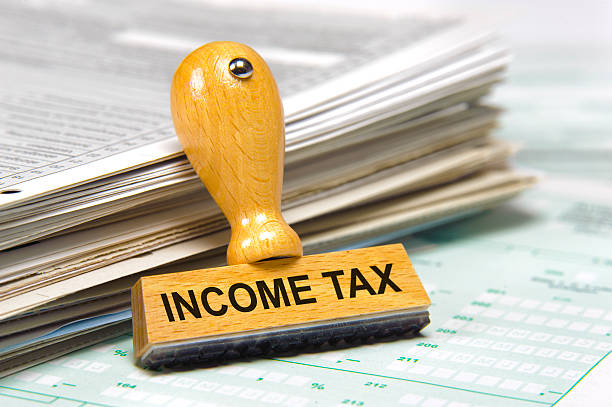As a business owner, one of your most important responsibilities is managing your finances. This includes understanding and properly filing your quarterly business tax.
While taxes can be complex and overwhelming, they are a necessary part of running a successful business. By mastering the ins and outs of quarterly business taxes, you can maximize your profits and ensure that you are meeting all of your legal obligations.
In this comprehensive guide, we will provide you with the knowledge and tools you need to confidently navigate the world of quarterly business taxes. From understanding key terms and deadlines to strategies for minimizing your tax burden, we will cover everything you need to know to take control of your business finances and maximize your profits.
What is Quarterly business taxes?
Quarterly business taxes are tax payments made by businesses on a quarterly basis to the IRS and state tax agencies to cover their estimated tax liability for the current tax year. These taxes are paid by self-employed individuals, freelancers, and small business owners who do not have taxes withheld from their income by an employer.
Quarterly business taxes are also known as estimated taxes or quarterly estimated tax payments. The purpose of these taxes is to help businesses pay their taxes throughout the year and avoid owing a large amount of tax when they file their annual tax return.
Business owners are required to pay quarterly business taxes if they expect to owe at least $1,000 in tax liability for the year. If a business owner fails to make these quarterly payments or underpays, they may be subject to penalties and interest charges. Therefore, it is important for business owners to estimate their tax liability accurately and make timely and accurate quarterly tax payments to avoid penalties and interest charges.
Related: How to File Your Taxes: A Comprehensive Guide in 2023
Why Do Businesses Need to Pay Quarterly Business Taxes?
The United States has a pay-as-you-go tax system, which means that taxes are paid throughout the year as income is earned. Most businesses are required to make estimated quarterly business tax payments to the Internal Revenue Service (IRS) and state tax agencies to avoid underpayment penalties. If a business owes more than $1,000 in taxes for the year, they are generally required to make estimated tax payments.
Quarterly business tax payments help businesses stay on top of their tax obligations, reduce the likelihood of penalties, and prevent a large tax bill at the end of the year. Quarterly payments also help businesses manage their cash flow by spreading their tax liability throughout the year.
What Taxes are Included in Quarterly Business Taxes?
The taxes included in quarterly business taxes vary depending on the type of business and the state where the business is located. Generally, quarterly business taxes include estimated income taxes, self-employment taxes, and state and local taxes.
Estimated Income Taxes: Estimated income taxes are taxes paid on income that is not subject to withholding, such as income from self-employment, rental income, or investment income. Businesses must estimate their total income for the year and pay taxes on that income each quarter.
Self-Employment Taxes: Self-employment taxes are Social Security and Medicare taxes that self-employed individuals are required to pay. These taxes are based on the net income of the business and are paid in addition to estimated income taxes.
State and Local Taxes: State and local taxes can include sales taxes, use taxes, and other taxes levied by state and local governments. These taxes are generally paid quarterly, and the amount of tax owed depends on the location of the business.
How to Calculate Quarterly Taxes?
Calculating quarterly taxes can be a complex process, but there are several tools and resources available to help businesses calculate their tax liability accurately. The IRS provides a Form 1040-ES, which includes a worksheet to help businesses calculate their estimated tax liability.
To calculate estimated taxes, businesses must estimate their total income for the year and deduct any eligible deductions and credits. The remaining amount is the business’s taxable income, and taxes are calculated based on the tax rate for that income level. The tax rate for self-employment taxes is 15.3%, which includes 12.4% for Social Security and 2.9% for Medicare.
It is important to note that businesses must make accurate and timely estimated tax payments. Failure to pay the correct amount of estimated taxes can result in underpayment penalties and interest charges.
When Are Quarterly Taxes Due?
Quarterly tax payments are due four times a year, with the due dates falling on the 15th of April, June, September, and January (or the following business day if the 15th falls on a weekend or holiday). Businesses must make estimated tax payments on time to avoid penalties and interest charges.
It is essential to note that quarterly tax payments are based on the business’s income for the current year. If a business experiences a significant change in income, they may need to adjust their estimated tax payments to avoid underpayment penalties or overpayment of taxes.
How to File Quarterly Taxes?
To file quarterly taxes, businesses must complete Form 1040-ES and submit it to the IRS and state tax agencies. The form includes a detailed information about how to calculate estimated taxes, how to pay taxes electronically, and how to adjust estimated tax payments if necessary.
When completing Form 1040-ES, businesses will need to estimate their total income for the year, deduct eligible expenses, and calculate their taxable income. The form also includes a section to calculate self-employment taxes and a worksheet to help businesses determine the amount of their estimated tax payments.
Once the estimated tax payments have been calculated, businesses can pay taxes electronically through the Electronic Federal Tax Payment System (EFTPS), which is a free online payment system provided by the U.S. Department of the Treasury. Businesses can also pay taxes by mail using Form 1040-ES payment vouchers.
It is important to keep accurate records of estimated tax payments, as these payments will need to be reported on the business’s annual tax return. Accurate record-keeping can also help businesses avoid overpaying or underpaying their estimated taxes and reduce the risk of penalties or interest charges.
What Happens if a Business Does Not Pay Quarterly Taxes?
Failure to pay estimated quarterly taxes can result in penalties and interest charges. The IRS may charge a penalty of 0.5% per month on the unpaid tax liability, up to a maximum of 25% of the unpaid tax amount. State and local tax agencies may also impose penalties and interest charges for late or unpaid taxes.
If a business consistently fails to pay estimated quarterly taxes, they may also face additional penalties, such as the imposition of a trust fund recovery penalty, which is a penalty levied against individuals who are responsible for collecting, accounting for, or paying trust fund taxes but willfully fail to do so.
It is essential for businesses to stay on top of their tax obligations and make accurate and timely estimated tax payments to avoid penalties and interest charges.
Tips for Managing Quarterly Business Taxes
Managing quarterly taxes can be challenging for business owners, but there are several tips and strategies that can help simplify the process and reduce the risk of penalties and interest charges.
- Keep Accurate Records: Accurate record-keeping is essential for managing quarterly taxes. Businesses should keep records of all income, expenses, and tax payments to ensure that they can accurately calculate their estimated tax payments and report their tax liability at the end of the year.
- Estimate Taxes Conservatively: It is better to overestimate taxes than to underestimate them. Businesses should estimate their taxes conservatively to avoid underpayment penalties and interest charges.
- Use Tax Software: Tax software can help simplify the process of calculating estimated taxes and ensure that businesses are taking advantage of all available deductions and credits.
- Hire a Tax Professional: If managing quarterly taxes becomes too challenging, businesses may want to consider hiring a tax professional to help with tax planning, record-keeping, and filing tax returns.
- Stay Up-to-Date with Tax Laws: Tax laws and regulations are constantly changing, and businesses need to stay up-to-date with these changes to ensure that they are complying with all tax obligations.
- Plan Ahead: Business owners should plan ahead and keep track of important tax deadlines to avoid missing quarterly tax payments. They should also consider any upcoming changes in their business that could affect their tax liability, such as changes in income or expenses.
Conclusion
In conclusion, quarterly business taxes are an essential aspect of running a business, and it is crucial for business owners to understand what they are, how they work, and how to file them correctly. By keeping accurate records, estimating taxes conservatively, using tax software, hiring a tax professional, and staying up-to-date with tax laws, businesses can manage their tax obligations effectively and avoid penalties and interest charges.



